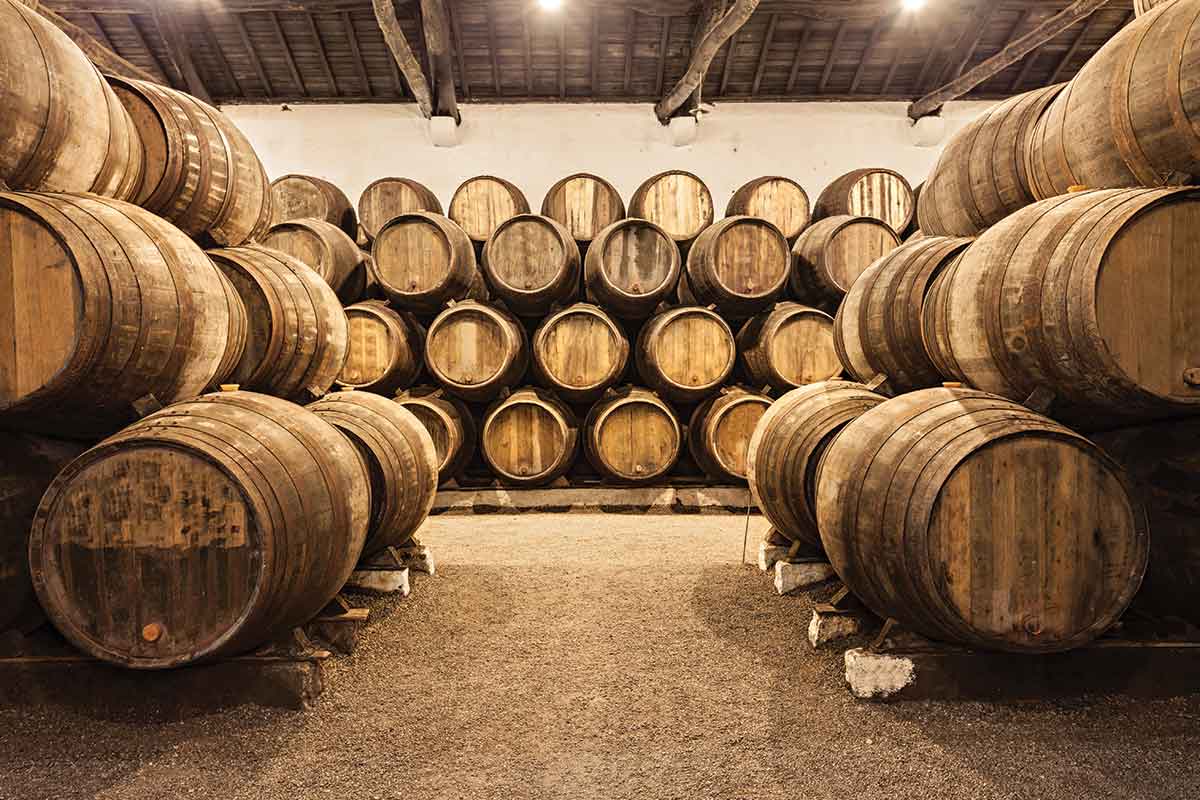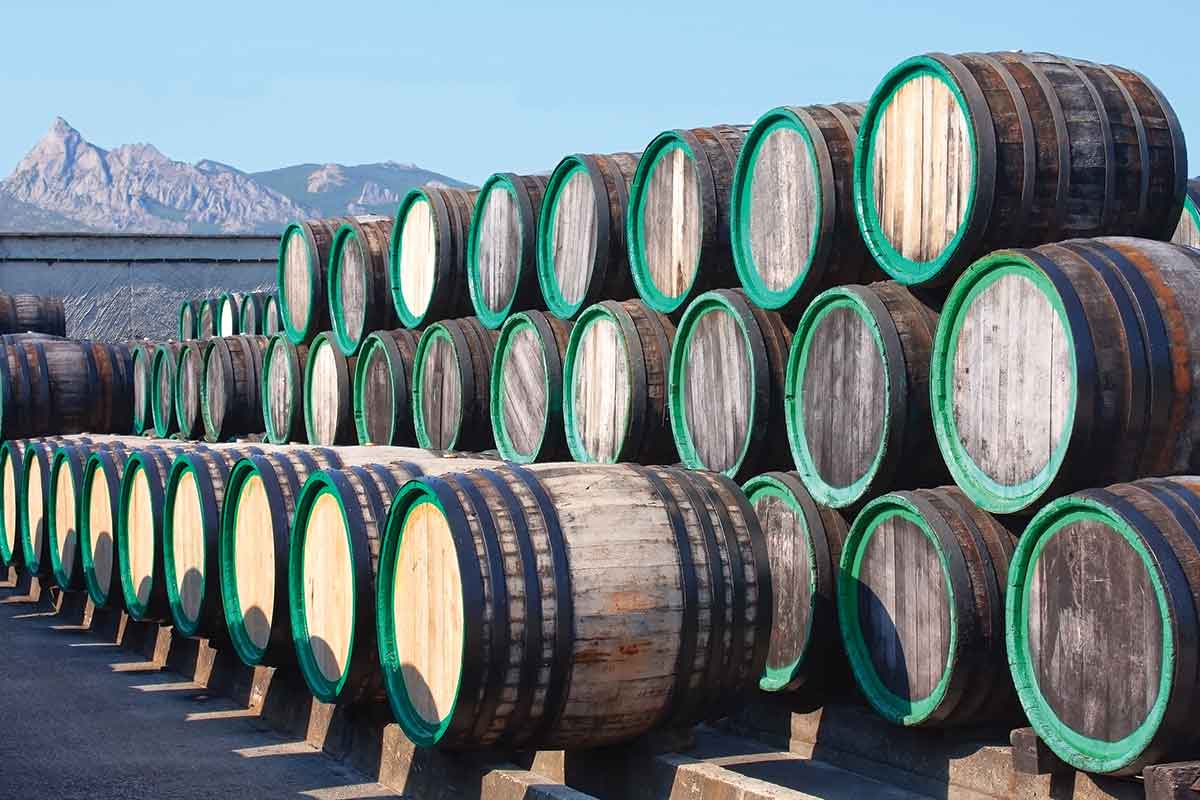A whiskey cask is a whiskey cask, right? Well, not quite. Whiskey casks come in a vast array of sizes, the prevalence of which has grown greatly in the past decade. That’s thanks in part to craft distillers searching for smaller barrels, as well as the increasing use of all manner of casks for finishing and secondary maturation.
The Bourbon Barrel
Bourbon barrels are the backbone of the whiskey industry. Their time spent maturing bourbon is only the beginning of their career trajectory, too. Once they’ve done their job helping to create bourbon, they’re sent over by the millions to Scotland — and also used in large numbers by the rum and beer industries, and for the maturation of many other spirits — where they’re used to mature Scotch whisky.

While they’ll always be called bourbon barrels, their second acts in Scotland are actually for a much longer period of time than their titular job. Not only could they be used for 10 or 20 years in Scotland, they’re commonly reused, again and again.
Bourbon barrels, also known as American barrels or American standard barrels, are 53 gallons in size. If that seems like a random number, it’s almost exactly 200 liters.
Of course, there’s no rule that you must age bourbon in 53-gallon barrels. It’s the standard, but it’s not codified or required, and as mentioned, craft distillers in particular are seeking out different sizes. This is generally in an attempt to capitalize on a more rapid maturation process. However, a deft hand is required to balance out the speed versus size equation, and prevent whiskey matured in smaller barrels from becoming over-oaked.
Common smaller sizes include 30, 20, and 15 gallons, and in some cases, barrels as small as 5 or 10 gallons. Of course, you could go smaller, though you wouldn’t want to for any kind of commercial use. Barrels can be as small as 1 liter in size; you can buy one to keep on your shelf to mature your personal house blend, or even a cocktail.
Common Whiskey Casks
While the standard bourbon barrel is unquestionably 53 gallons, the precise size or capacity of other casks is in many cases highly variable. If you asked 10 different people from 10 different places to give you the size of different spirits and wine casks, you might get 10 different answers.

To help shut out the noise, we’ve done our best to give the most accurate sizes for these whiskey casks, but bear in mind these figures are by no means universal. We’ll start with the most common whiskey casks you’ll come across in the whiskey world, and move our way up in size.
Barriques are wine casks, and are slightly larger than bourbon barrels. They have a 225 liter capacity, though in some cases can range up to 300 liters. The 300-liter capacity French oak barrique is the most common cask used for cognac.
Hogshead casks are actually reconstructed barrels, almost always bourbon barrels, and are made with additional staves which increase their capacity. Five bourbon barrels are deconstructed and repurposed into four hogsheads. Deployed in great numbers for Scotch whisky, hogsheads have a 225 to 250 liter capacity.
Sherry butts are in huge demand in the modern whiskey world. The recognized capacity of a sherry butt is 500 liters, though again, that can vary. Here’s where you can use the “I like big butts and I can not lie,” joke you’ve been saving.
Puncheons also have a 500-liter capacity, though are shorter and wider than butts. Capacities can vary up to 600 or 700 liters.
There’s more variance with port pipes, with capacities ranging from 450 to 650 liters. They are taller and slimmer than sherry butts, even if made with the same capacity.
More Whiskey Casks to Know
Drums are used for Madeira, and have a fairly standard size of 650 liters. They also have a distinctive shape, coming in shorter and squatter than butts. They’re not fat, they’re just big boned.
Gorda casks, though, well, the name means fat. They have a 700 liter capacity. Then there’s the tun, which comes in between 950 and 1,000 liters. You probably won’t see too many of these two around, however.
There are also smaller sizes to know, not that being small in stature eliminates any confusion. Consider the case of the quarter cask. This is easy, right? The name tells you the size, it’s one quarter of a cask, so it’s 50 liters. Well, if you’re starting your measurement with a bourbon barrel. However, if you’re starting your measurement from a butt, a quarter cask is 125 liters. You can find the term being used to describe both sizes of whiskey casks. If you’re using “quarter casks,” to describe a barrel with a 125 liter capacity, then you would use the term octave for a 50 liter cask.
There are, of course, many others. But you likely don’t need to worry yourself with obscure sizes of whiskey casks with correspondingly wacky names, such as firkins and rundlets and kilderkins. That’s a party trick that won’t win you as many friends as you think. But knowing how to differentiate between a bourbon barrel and a hogshead, or a sherry butt and a port pipe, just might.
Ready to try out a variety of whiskey casks?
With Distiller, you’ll always know what’s in the bottle before you spend a cent. Rate, Review, and Discover spirits. Head on over to Distiller, or download the app for iOS and Android today!
Want to enjoy Distiller ad-free? Join Distiller Pro today to support the Distiller platform and keep ads off of your screen.



